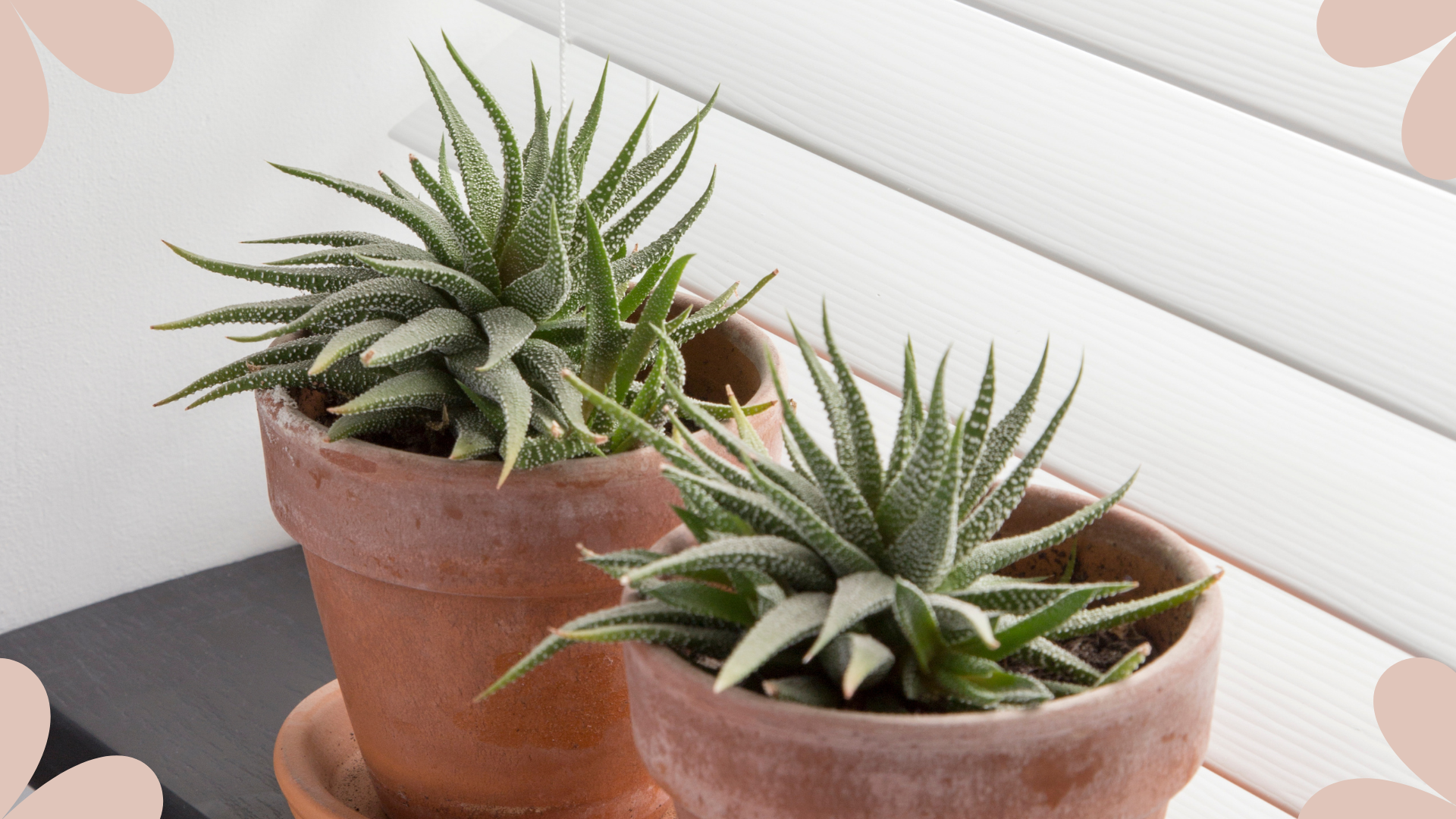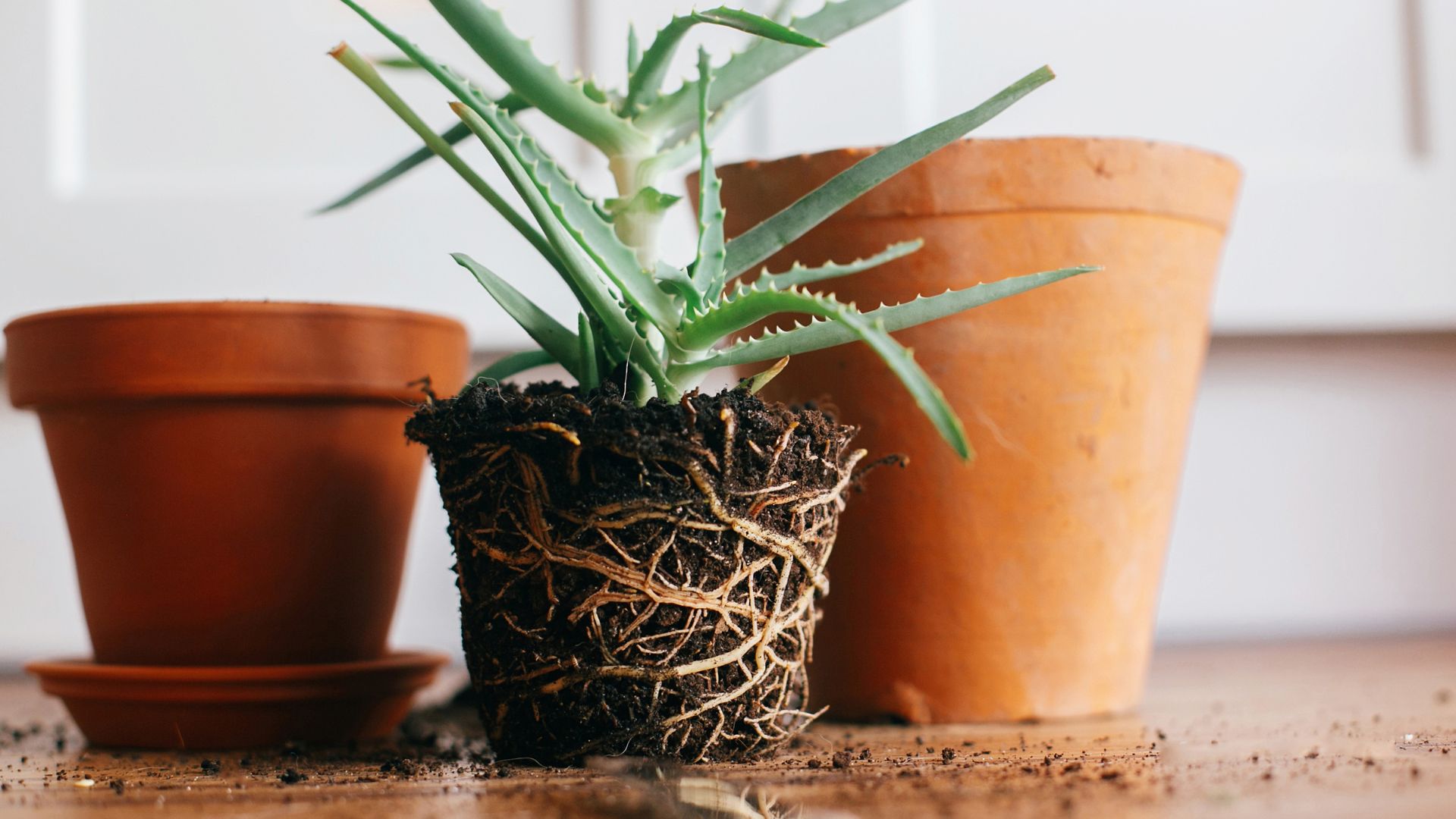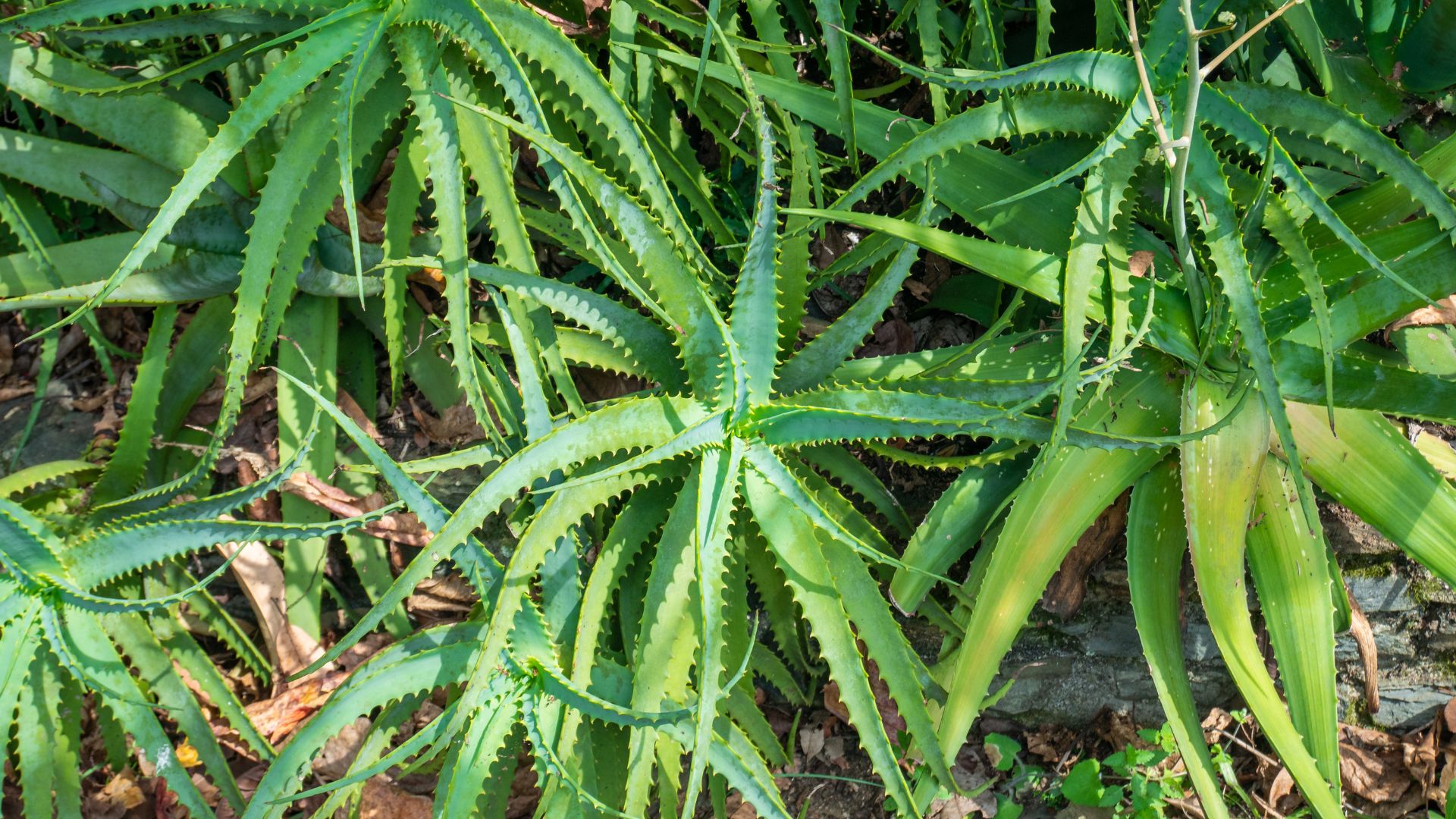
Knowing how to care for an aloe vera plant is a relatively easy task when you consider the many benefits this popular plant offers.
Unlike how to care for an orchid, this desert plant is quite happy to be left to its own devices most of the time and will still provide you with healing aloe vera gel – known for its soothing properties it's commonly used for treating sunburn, acting as natural hay fever remedy and improving complexion.
As one of the easiest houseplants to keep alive, the aloe vera plant is a particularly low-maintenance yet high-reward species. Despite being easy, there are still essential tips to keep the plant thriving as our team of experts reveals in this no-nonsense care guide.
How to care for an aloe vera plant
Once you've mastered how to care for a bonsai tree or finally finished your collection of the best fragrant plants to make your house smell good, taking care of aloe might seem like a piece of cake. And whilst you may be right, here's some guidance on ensuring your plant thrives...
1. Exposure to sunlight

Whilst too much sunlight can cause issues such as peace lily leaves turning brown, finding the right balance will allow your plant to thrive without the risk of scorching.
"Aloe vera thrives in bright, indirect light," explains Georgina O'Grady, managing director at Evergreen Direct."Therefore, I recommend placing the plant near a window with eastern or western exposure."
Just make sure your plant is not in constant sunlight or too near the window, the glass can magnify the sunlight and cause even worse scorching of the leaves. Although this plant does survive under the sun and heat in its native regions, the indoor kind won't be able to last very long under similar conditions.
2. Accurate watering
Unlike some of the hardest houseplants to keep alive, the aloe vera plant only needs minimal watering and won't need to be included in your houseplant watering routine every time.
"It should be noted that even though it's a low-maintenance plant, aloe vera can be killed by overwatering," says Petar Ivanov, a professional gardener at Fantastic Gardeners. "Water it sparingly, only when the top few centimetres of the soil in its pot have dried out and allow any excess water to fully drain away and don’t water it at all in the winter."
There isn't a hard-set rule on how often you should water your aloe vera plant through the summer, it all depends on what the environment in its room is.
3. Compost mix
Aside from watering and sunlight exposure, the compost mix your aloe vera plant is sat it makes a huge difference to its health too. This is common amongst most of the best indoor plants for your health and well-being, especially with more sensitive species.
Peter recommends using houseplant or cactus compost. He says, "Ordinary peat-free, multi-purpose compost with horticultural grit or perlite added works well. You can also top the compost with a layer of grit to keep the base of the plant dry and prevent it from rotting."
There being too much water in the soil is one of the most common reasons plants grow mould on the top of their soil and can lead to a whole host of health issues for them.
4. Minimal feeding
Another low-maintenance part of looking after an aloe vera plant is that they require very little feeding. Similar to caring for a Venus flytrap, aloe vera plants don't need too much external interference or added nutrients.
"You should only be sparse feeding with weak plant food. Aloe vera only needs to be fed at the most every couple of months from April to September," explains Petar.
We'd advise using a houseplant feed and diluting it with a significant amount of water, over fertilising can lead to a diseased and or mouldy plant. We recommend this Baby Bio houseplant food from Amazon for just £1.97 with the current 59% off deal.
5. Potting

Whilst aloe vera plants can very happily survive outside, for indoor living they'll need a suitable pot and Petar is quick to suggest terracotta. If you already have some in your garden why not clean the terracotta pots and bring them indoors for your aloe?
Petar explains how terracotta is best for allowing excess water to dry out fully in between waterings. He says, "If you don’t have a terracotta pot, get one that has a drainage hole and is the same size as the root ball. A container that’s about as wide as it’s deep will work perfectly."
On the topic of pots, knowing when to repot your plant is an important step in maintaining long-term health and growth. As you may have guessed, the aloe plant rarely needs repotting, in fact, Petar recommends repotting the plant only every two to three years. You can follow our simple guide on how to repot a plant when the time is right.
FAQs
How to grow aloe vera indoors vs outdoors
If you're lucky enough to live in a warmer climate and have the room for an outdoor aloe vera plant then there are some care tips you'll need.
"One of the most important differences when growing an aloe vera indoors is pruning. These plants can grow to 91cm long, so they need pruning if you want to keep them indoors," explains Petar.
It's very different to how you prune a rose bush, as aloes don't need to be pruned regularly. Peter explains that if you regularly cut your plant there's actually a higher chance of killing it. He says, "With each cut, you’re snipping away a lot of the nutrients that the plant needs to stay healthy and nourished. There is also a correct way to prune your aloe plant."
Only cut away dead or drying leaves, those that are discoloured, dried or shrivelled up are the only ones which should be removed. If you want to harvest the plant to collect its soothing gel then you'll need to take more precautions.

How to harvest aloe vera
Aloe vera plants aren't just good for being a houseplant that helps with condensation, their flesh has healing powers both for your skin and your digestion. So whilst you may be tentative about cutting it, harvesting the plant's leaves is part of the advantage of growing the plant.
Firstly ensure you have disinfected your shears or sharp kitchen knife, this will stop any disease from spreading to your plant. From there it's extremely simple says Georgina, "Simply nip the most mature leaves close to the base. The gel can be extracted for various uses, including skincare and medicinal purposes. Be sure not to harvest the aloe vera too frequently, otherwise, you run the risk of stunting the plant's growth."
So whilst it is a great houseplant for your kitchen, don't forget to reap the other rewards too.
Now you know how to care for an aloe vera plant, why not keep up to date with how to care for a peace lily? They're another low-maintenance plant but are very impressive plants once they bloom.







